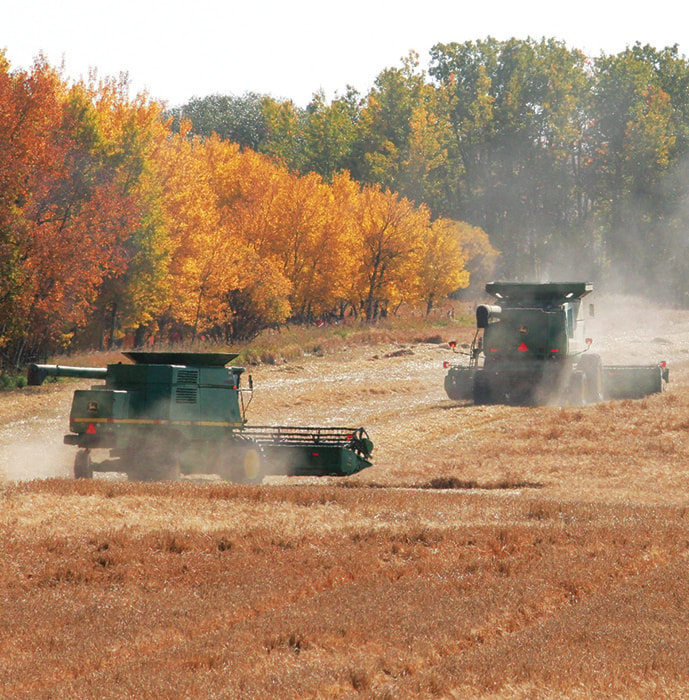A 20-year trend of fewer and fewer farms across the country was confirmed again last week with the release of the 2016 Census of Agriculture.
The number of farms in Canada dropped 5.9 per cent from the last census in 2011 to almost 193,500 farms. A similar decrease — six per cent to about 40,000 farms — took place in Alberta, though the rate of decline is the lowest seen since 1996 when the number of farms marked a small increase to around 62,000 farms.
With the loss of farms, the average acres per farm increased once again from 779 in 2011 to 820 in the latest census.
Ponoka County agricultural services manager Justin Babcock stated there are a few challenges for his department as farms get larger.
“The only difference is that there are less people for us to deal with, but with that issues with weeds and pests can tend to get bigger. Sometimes, fields can get missed and problems can grow faster,” he said.
“And the change in farms here, especially in cattle, hasn’t been huge as there seems to be more pasture being turned into cropland mostly due to the price for land.”
On the plus side though, for the first time in 15 years, Alberta saw its reported beef cattle inventory rise while the province remains second behind Ontario for the most number of farms.
Alberta had 41.6 per cent — or 3.34 million head — of the overall Canadian beef herd, a jump of 1.3 per cent from 2011 that is a departure from the rest of the country where cattle inventories fell by 2.4 per cent. This was the first time since 2001 Alberta has witnessed an increase, which include a bit of an anomaly as nearly one per cent fewer farms had beef cattle.
Alberta also led the way with nearly 60 per cent of all feeder cattle capacity and accounted for slightly more than 42 per cent of the nation’s breeding stock.
The comparative advantage, with closer proximity to processing combined with available feed and pasture, is a big part of the reason Alberta continues to remain on top of the beef industry.
With that, farm and field crop areas in Alberta — at 50.3 million acres — were second only to Saskatchewan. Canola led the way at 6.16 million acres with spring wheat and barley lower by 200,000 acres each. Meanwhile, sweet corn fell 40 per cent to just under 2,500 acres and production of fruit, berries and nuts dropped 17 per cent.
On the dairy front, Alberta operations fell by less than one per cent to 80,014 head with the number of farms with dairy cows dropping more than 12 per cent. That didn’t impact milk production, which rose more than 11 per cent to 732.3 million litres — due to better nutrition, genetics and production.
Pig production rose in the province by 4.6 per cent to 1.5 million head as the number of farms with pigs jumped by more than 40 per cent, due in part to better market pricing and lower costs.
“For us, we haven’t seen much in the way of increased intensive livestock operations,” Babcock stated.
“I think the rise in beef cattle numbers is mostly a regrowth of herds as the industry continues to rebound. Plus, dairy seems to be simply consolidating its numbers.”
The number of Albertans farming dropped seven per cent — to 57,605 — with women making up 31 per cent, a hike of three per cent from 2011. And the age of those farmers is growing, with the 55 and older group accounting for 57 per cent of that figure and the average age rising to 55.7 years old.
Meanwhile, Alberta also has the second highest rate of off-farm income behind B.C., with 47 per cent reporting an off-farm job. However, that number is down from five per cent for the previous census, though also three per cent higher than the national average.
With that, gross farm receipts hit $17.7 billion with operating expenses of $15 billion, making the average of operating expenses 84 cents for every dollar of gross receipts — one cent lower than the previous census.
